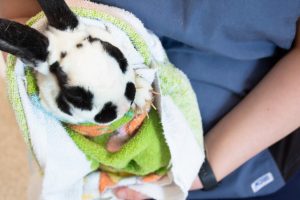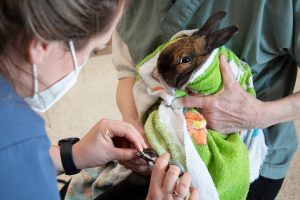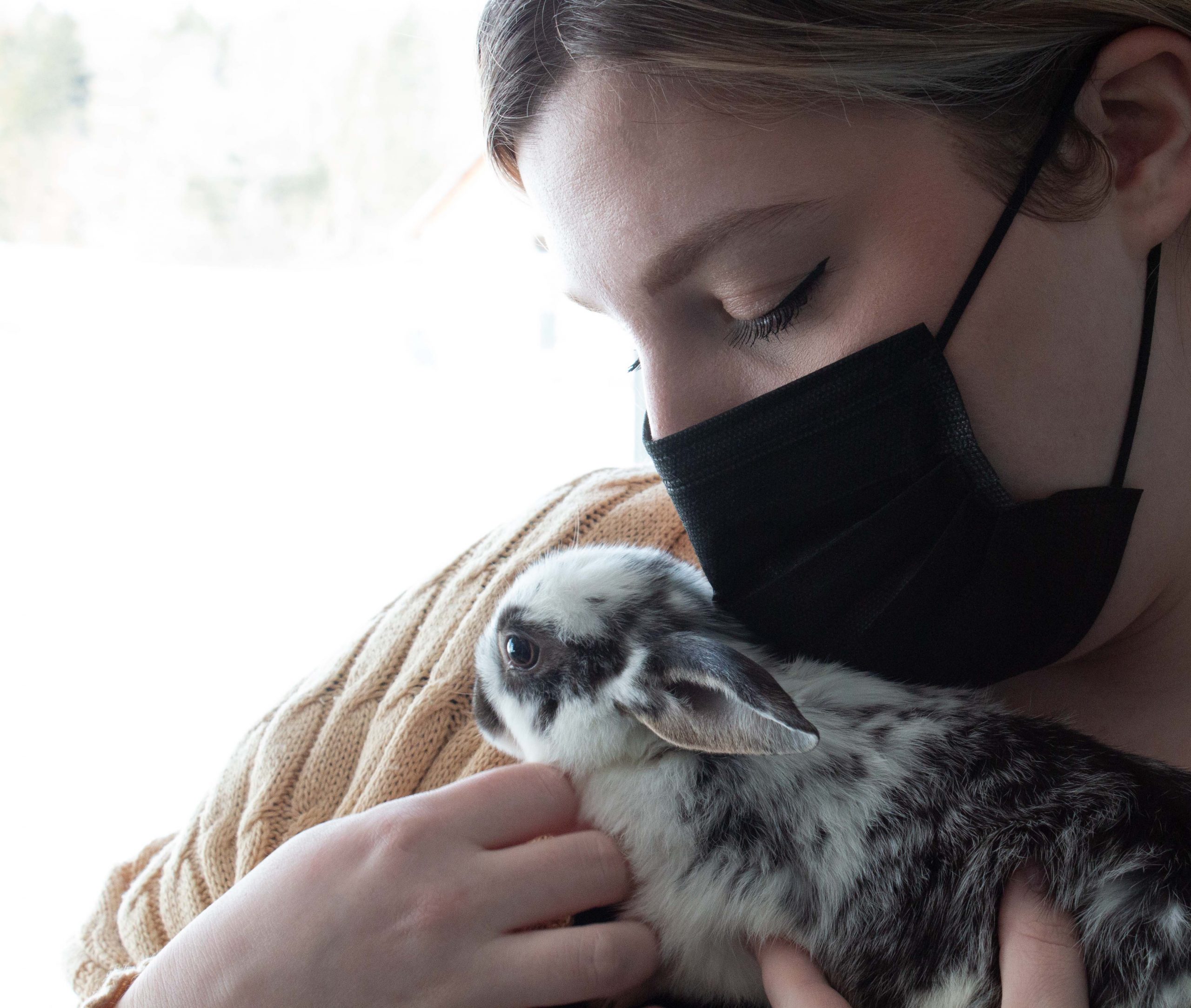Are you thinking about adopting a rabbit?
Here are some facts about what you’ll need to know before your bun comes home.
Are you ready for a 10-year (or more) commitment?
Rabbits make wonderful companions. They are clean, relatively quiet, and adorable! But before you jump into rabbit ownership, make sure a rabbit is a good fit for your family.
The first thing to be done is ensure you have properly budgeted for your new furry friend. Costs for rabbit care can include an adoption fee, vet bills for spay/neuter surgery, annual checkups, occasional illness, housing, bunny proofing supplies, and (of course) food.
After ten or more years, these costs can add up! Make sure you do the math first.
Make sure to do your research on what it’s like to own a rabbit. The PEI Humane Society can help with this as we have lots of experience with rabbits and often have several in our care. You’ll also be provided with additional resources on rabbit care once your adoption has been finalized. We will provide you with resources and learning tools to ensure you’re well prepared to take your bun home.
Rabbits require daily exercise, so keeping them confined to a small space all the time will not suffice. The PEI Humane Society recommends that rabbits have a room to themselves or else a large enclosure for them to move around in. Some rabbit owners find luck in litter-training their buns and thus allowing them to roam free around their home.
It’s important to note that rabbits (like cats and dogs) have varied personalities. If you’re envisioning having a lap pet, a rabbit might not be right for you. In general, rabbits don’t like being held but some wont mind being pet.
Rabbit-proofing your home
Remember, rabbits like to chew EVERYTHING. So anywhere your rabbit is allowed to explore MUST be bunny-proofed.
Bunny-proofing is an important part of preparing your home for a rabbit. You will be greatly disappointed when cherished possessions are gnawed up if you’re not prepared for this natural bunny behaviour (chewing).
The first step when you decide to bring a bunny into your life is deciding where the bunny will primarily live. At the PEI Humane Society, we advocate that rabbits live inside the home with you, if possible. This provides much-needed social interaction for the rabbit, along with protection from predators and severe weather.
A great place to house your rabbit is in a central area of your home. You can use a puppy pen to block off a corner of a living room or family room. A puppy pen provides ample space for a litter box, food/water bowls, a hay box, and a cardboard castle. The rabbit also still has plenty of room to hop around in. Using a puppy pen is a better option than a cage because it provides more space, and it can be easily adjusted if you want to gradually increase the area to eventually give your bunny free reign in a bunny-proofed room (or rooms). Because puppy pens have doors, it’s easy to let your bunny out of the pen for daily exercise.
Once you’ve set up the primary housing location for your rabbit, you’ll have to bunny proof the surrounding area where your rabbit will romp, rumble and play. All cords must be covered with wire protectors or lifted out of reach (at least 3-4 feet). Your bunny will also be drawn to wooden furniture legs, books/stray papers, remote control buttons, moldings, rug corners, and basically anything else that’s potentially “chewable”. If you don’t want those things destroyed, you will have to keep them out of reach or covered. Or you will have to carefully supervise all out-of-pen exercise time.


Remember to cut your rabbit’s nails regularly. Like a dog’s nails, they can grow very long and be uncomfortable and dangerous to their health.
Bunny Supply Checklist
- Indoor housing – Get a puppy pen 36 inches or higher so your rabbit can’t jump out.
- Wire covers – Plastic sleeves can be neatly connected to your wall. Flex tubing is another great option for covering and/or bundling wires.
- Furniture / baseboard protection – Large split flex tubing can fit over wooden table or chair legs. Furring strips, 2x4s or other wood panels can be used to cover baseboards.
- Puppy pens / baby gates – Puppy pens can help block off areas or confine your rabbit to a safe area of a room. Metal baby gates can be used to block off rooms.
- Litter box – A medium-sized cat litter box (no top) or a shallow storage container will do.
- Rabbit-safe litter – Opt for a recycled newspaper pellet litter such as Yesterday’s News (unscented) or unscented wood pellets.
- Food / water bowls – Ceramic dishes are heavy enough so your rabbit can’t tip them over.
- Hay feeder – This helps keep hay fresh and available to your rabbit at all times.
- Food (hay, pellets, vegetables, and water)
Purchase hay by the bale from a local farmer (check local Craigslist ads) or order bulk hay online. (You can even order it as a “Subscribe and Save” on Amazon.) - Cardboard box – Create a cardboard castle by cutting doorways and windows in a large cardboard box. This gives your rabbit a place to hide and/or sleep where they are hidden and away from view.
- Chew toys – Sea grass mats are acceptable to chew and can be used to cover areas. Woven grass play balls are also a favorite for distraction. Wood and rope activity centers/toys capture rabbits’ interest.
- Nail clippers – You will need to regularly trim your bunny’s nails. If your rabbit has dark claws, a small flashlight helps you to locate the quick and avoid it
If you’re interested in adopting a rabbit from the PEI Humane Society, check out our Tiny Paws adoption page to see which rabbits are available.


